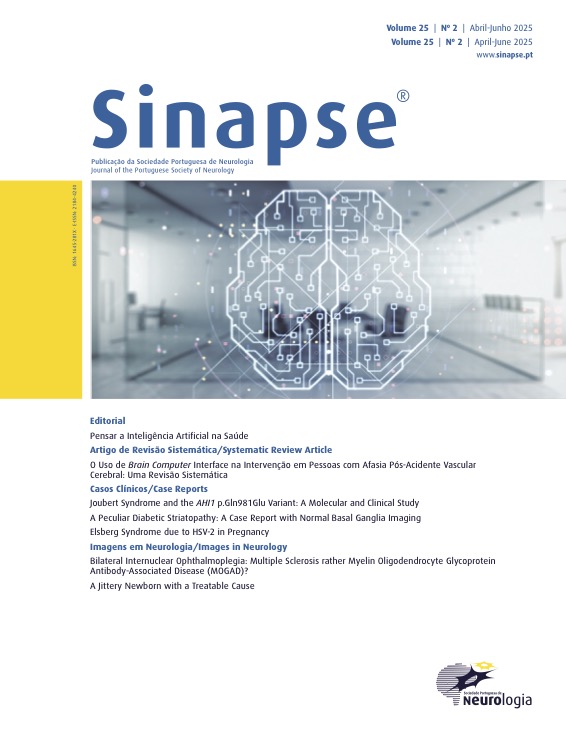Bilateral Internuclear Ophthalmoplegia: Multiple Sclerosis rather Myelin Oligodendrocyte Glycoprotein Antibody-Associated Disease (MOGAD)?
DOI:
https://doi.org/10.46531/sinapse/IN/124/2025Keywords:
Multiple Sclerosis, Myelin-Oligodendrocyte Glycoprotein, OphthalmoplegiaAbstract
Increasing knowledge about neuro-inflammatory conditions as lead to new challenges in establishing a diagnosis. Clinical distinctive features might help. We present a 34-year-old patient with bilateral internuclear ophthalmoplegia (bINO). Investigation was compatible with demyelinating central nervous system (CNS) disease. Low-positive IgG myelin oligodendrocyte glycoprotein (MOG) antibodies were found. Rituximab was started and the patient has remained without further clinical or magnetic resonance imaging (MRI) activity. Acknowledging that bINO is a wellknown manifestation of multiple sclerosis (MS) but rarely reported among MOGAD patients its occurrence might help distinguish MS from MOGAD in an apparent overlap setting, favoring MS.Downloads
Download data is not yet available.
References
- Nerrant E, Tilikete C. Ocular Motor Manifestations of Multiple Sclerosis. J Neuroophthalmol. 2017 Sep;37(3):332-340. doi: 10.1097/WNO.0000000000000507. PMID: 28410279.
- Park JS, Lee HJ, Chun BY. Myelin Oligodendrocyte Glycoprotein Antibody-Associated Disease Presenting as Bilateral Internuclear Ophthalmoplegia: A Case Report. J Neuroophthalmol. 2023 Nov 9. doi: 10.1097/WNO.0000000000002024.
Published
2025-05-09
How to Cite
1.
Marques AJ, Matas A, Gabriel JP. Bilateral Internuclear Ophthalmoplegia: Multiple Sclerosis rather Myelin Oligodendrocyte Glycoprotein Antibody-Associated Disease (MOGAD)?. Sinapse [Internet]. 2025 May 9 [cited 2025 Dec. 16];25(2):90-1. Available from: https://sinapse.pt/index.php/journal/article/view/124
Issue
Section
Images in Neurology
License
Copyright (c) 2024 Ana João Marques, Andreia Matas, João Paulo Gabriel (Autor)

This work is licensed under a Creative Commons Attribution-NonCommercial 4.0 International License.








